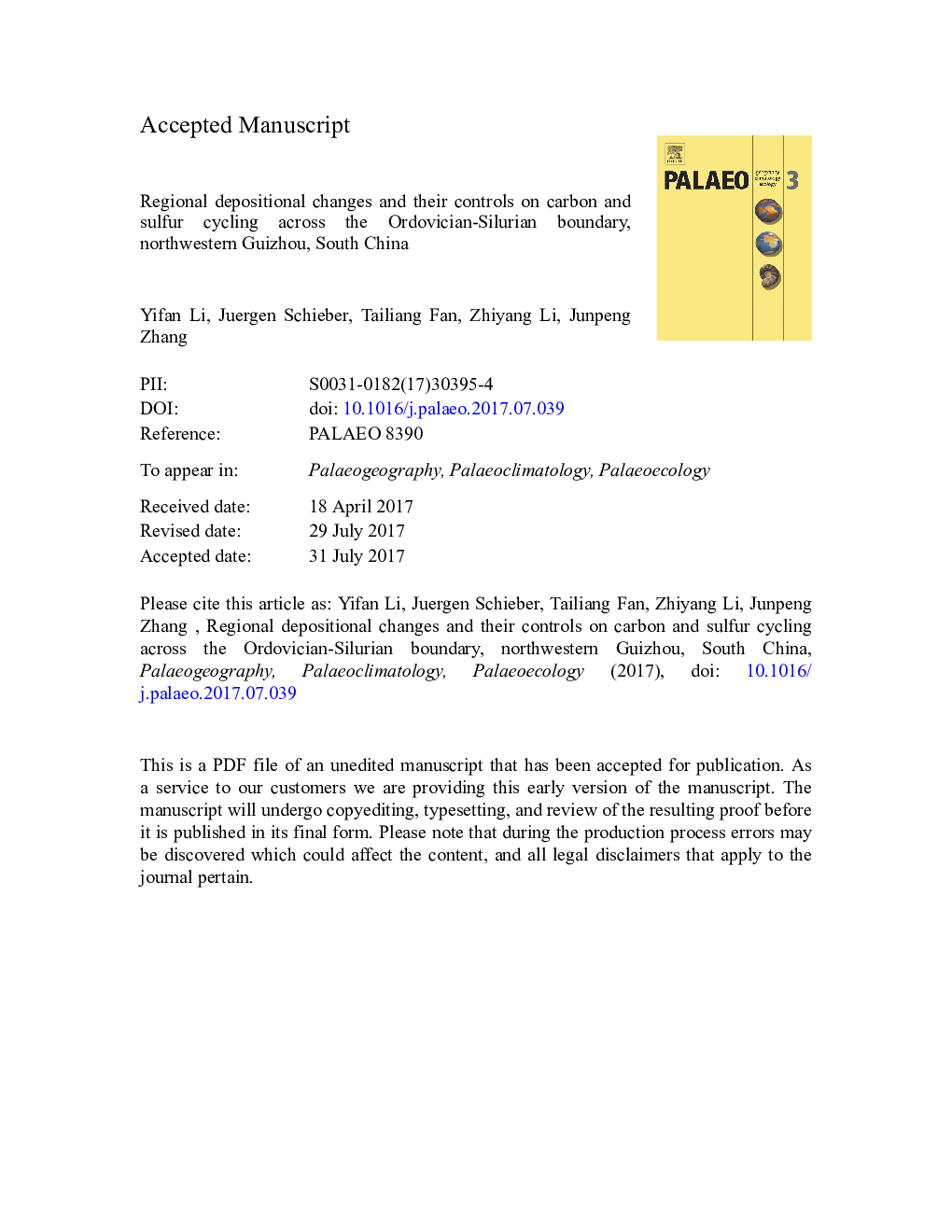| Article ID | Journal | Published Year | Pages | File Type |
|---|---|---|---|---|
| 8868725 | Palaeogeography, Palaeoclimatology, Palaeoecology | 2017 | 53 Pages |
Abstract
The controls of regional depositional environment on stable isotope records spanning the Ordovician-Silurian boundary on the Yangtze Platform have seldom been investigated. The objectives of this study include reconstruction of regional depositional settings and assessment of how sedimentary processes may have influenced carbon- and sulfur-isotopic fractionation. Seven shale facies have been recognized in the Wufeng-Longmaxi interval from two locations. Completely bioturbated claystone of the basal Wufeng Formation accumulated on a shallow oxygenated muddy shelf. Overlying faintly banded black siliceous shale suggests deposition under deep anoxic conditions interrupted by episodes of dysoxia. Muddy fossiliferous facies of the Guanyinqiao Formation reflects a glacial sea-level lowstand setting, and the observed proximal to distal heterogeneity of facies matrix supports shallowing in the proximal area. Overlying faintly banded black shale of the Longmaxi Formation tells of a post-glacial transgression. The carbonaceous deposits are overlain by banded gray and dark gray muddy siltstones and suggest a shoaling upward trend. The shallow-water facies display relatively heavier δ13Corg values, whereas deep-water facies are characterized by lower δ13Corg values. Discrepancies between Hirnantian positive δ13Corg excursions in proximal and distal areas probably reflect spatial gradient in seawater δ13CDIC induced by glacioeustasy. Deposits accumulated under oxic and physically dynamic conditions display strong positive δ34Ssulfide excursions, perhaps a consequence of diagenetic sulfate reduction occurred at some depth below the sediment-water interface and removed from the sulfate pool of overlying water column. Negative relationship between δ34Ssulfide and TOC indicates that redox conditions and physical reworking of sediment at the sediment-water interface controlled the rate of microbial sulfate reduction and sulfur isotope fractionation. Overall, co-variation of lithofacies and isotopic records suggests that local heterogeneity of seawater chemistry and sedimentary dynamics may exert partial controls on biogeochemical processes and amplify the magnitude of the Hirnantian isotopic excursions in the proximal area.
Keywords
Related Topics
Physical Sciences and Engineering
Earth and Planetary Sciences
Earth-Surface Processes
Authors
Yifan Li, Juergen Schieber, Tailiang Fan, Zhiyang Li, Junpeng Zhang,
